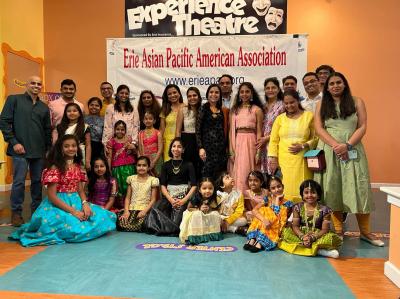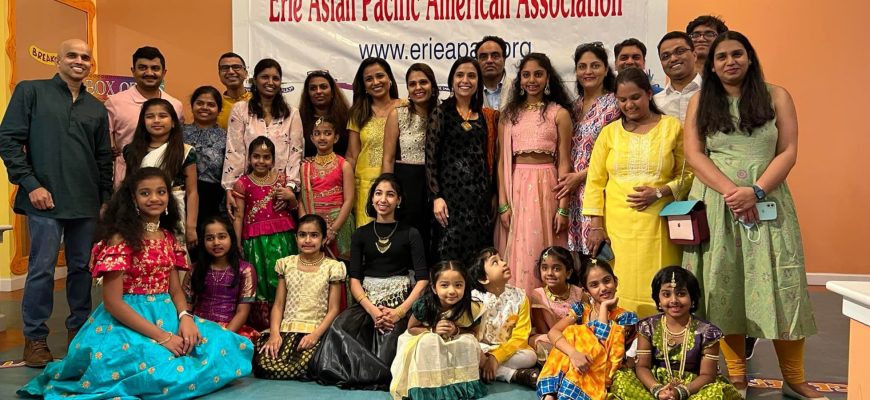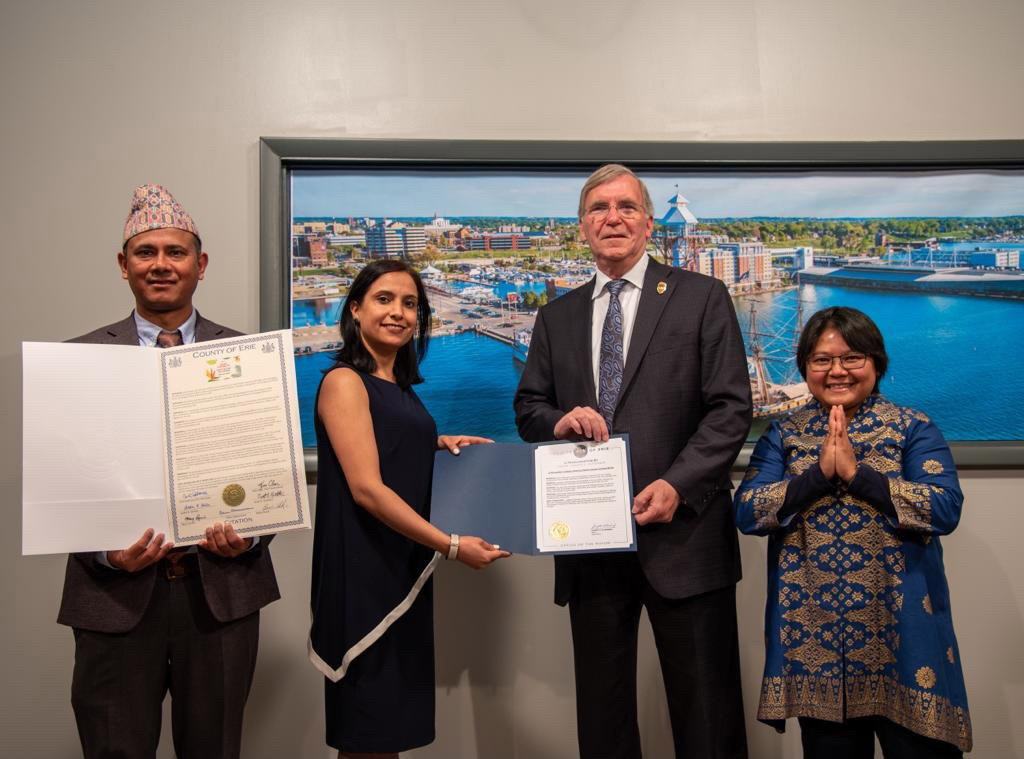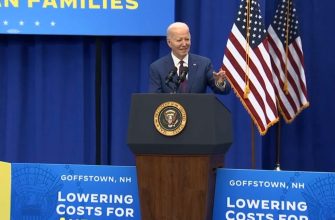
Erie APAA
Last May, the ExpERIEnce Children’s Museum welcomed members of the Erie Asian Pacific American Association to host Multicultural Asia day at the facility. Children use their passport and visit a number of booths representing different Asian countries to receive stamps and learn about the different cultures.
May marks the observation of Asian American, Native Hawaiian, and Pacific Islander (AANHPI) Heritage Month in the United States. Its story, at least on Capitol Hill, began in 1976 during the Bicentennial celebrations. A Chinese American congressional staffer named Jeanie Jew noted during these events the lack of recognition for Asian and Pacific American contributions. Her great-grandfather, after all, had immigrated from China and along with thousands of other Chinese immigrants helped build the transcontinental railroad, an essential and complex part of the American story.
By 1977, her connections had led to Congress introducing multiple resolutions for an observation during the first week of May. The bill passed in 1978 and the following year, President Jimmy Carter issued a proclamation officially designating the week as Asian/Pacific American Heritage Week.
“Unfortunately, we have not always fully appreciated the talents and the contributions which Asian-Americans have brought to the United States,” President Carter stated. “Until recently, our immigration and naturalization laws discriminated against them.”
Indeed, there was a long history of discrimination against people of Asian and Pacific ancestry in the United States. In 1873, a San Francisco newspaper printed a bolded headline: “THEY ARE COMING.” The editors declared that there was an impending “Chinese invasion” of “900,000 strong” coming to America. This sort of fear-mongering was common.
These fears would climax with the passage of the Chinese Exclusion Act of 1882. Numerous riots and even massacres against Chinese communities occurred throughout the following decades. The creation of the Asiatic Exclusion League in 1905 was further meant to keep other Asian immigrants, primarily of Japanese and Korean descent, out of the United States. In the following decades, similar groups would work to ban immigrants from all Middle Eastern and Southeast Asian countries. Perhaps even more well-known, especially in recent years, were the creation of Japanese Internment camps during World War II, as well as the discriminatory treatment of Vietnamese refugees who came to the United States following the Vietnam War. These events represent only a very small fraction of a much larger story.
“America’s greatness … derives from the contribution of peoples of many origins who come to our land seeking human liberties or economic opportunity,” Carter had said during his proclamation, adding how those of Asian ancestry had “played a significant role in the creation of a dynamic and pluralistic America, with their enormous contributions to our science, arts, industry, government,and commerce.”
The week was expanded in 1990 into a month-long celebration by President George H.W. Bush. “The history of Asian and Pacific Americans in the United States is a long and honorable one,” he noted. “[Their] customs and traditions have deeply enriched the wonderful heritage we share as a nation.” In 2009, the name was further altered to Asian American and Pacific Islander Heritage Month under President Barack Obama and then “Native Hawaiian” was added in a proclamation by President Joe Biden. Each year, a theme is also selected for the month by the Federal Asian Pacific American Council (FAPAC). This theme for 2023 is “Advancing Leaders Through Opportunity.”
In Northwestern Pennsylvania, the volunteer-based Erie Asian Pacific American Association (ErieAPAA), formed in 2005 as a collaboration between local businesses and the Erie Regional Chamber, contributes significantly to promoting awareness of the many Asian Pacific cultures throughout the Erie region. It has a board of officers as well as representatives from countries including Bangladesh, Bhutan, China, India, Japan, Myanmar, Pakistan, Philippines, Turkey, and Vietnam.
ErieAPAA organizes and hosts popular events such as the Asian Festival, Taste of Asia, and Multicultural Asian Day. They have hosted a screening of “Minari” at Waterford’s Sunset Drive-in, visited schools with educational programs, sponsored writing contests, helped people network within the area, and, to the delight of many appetites, held numerous food tasting events over the years.
The City of Erie honored the Erie Asian Pacific American Association (APAA), recognizing the organization’s efforts to bring together all members of the community. Erie APAA president Aman Oberoi received a copy of the proclamation from Mayor Schember.
Photo credit: Erie APAA
Amanpreet Oberoi, president of ErieAPAA, notes that the organization is still reeling from the effects of COVID-19. Many in leadership roles have also moved elsewhere in recent years. As a result, there are no major public events planned for this year while the organization is rebuilding.
“As a commissioner [to the Governor’s Advisory Commission on Asian Pacific American Affairs] and the president of this organization, my role this year shall focus on rebuilding and expanding our team and along the way collaborate, network, and also work for the other social causes,” explains Oberoi. Plans for May still include a collaboration with Gannon University for its students that will include food, music, and displays. She also adds that the organization will be participating in events for CelebrateErie and AmeriMasala and they are always open to working with schools and organizations.
This past year has also been a time in which Asian representation in entertainment has increased. Just this year, Michelle Yeoh became the first Asian woman to win an Academy Award for Best Actress while Ke Huy Quan became only the second Asian actor to win the award for Best Supporting Actor, both for their performances in Everything Everywhere All at Once. As has been widely reported in recent months, Quan, who found success as a child actor with movies such as Indiana Jones and the Temple of Doom and The Goonies, had given up acting for decades after realizing in the 1990s that Hollywood simply didn’t have non-stereotypical roles for Asian actors such as himself.
Streaming has been credited with much of this increase in representation. According to a 2022 study of 1,500 television shows across broadcast, cable, and streaming — streaming led the way with 11 percent of screen time including Asian representation (up from 6 percent two years prior), followed by broadcast television having 3.2 percent and cable lagging behind with 2.7 percent. As the Asian American Policy Review notes, such representation matters as media “creates the narrative foundation for how people of color are perceived and treated in the real world.”
“Negative portrayals have profound and insidious consequences,” they add. “Stereotypical portrayals of Asian American characters flood our screen again and again. … What we watch on our screens impacts the way we think, feel, and act.”
One can support these traditionally underrepresented communities by embracing this media. This could include shows such as Netflix’s Beef or the upcoming American Born Chinese (also starring Ke Huy Quan) on Disney+, movies like 2022’s RRR and Leonor Will Never Die, or, yes, finally deciding to check out the K-pop that Gen Z keeps discussing. It can be reading books from authors such as Nguyen Phan Que Mai, who recently published her second novel Dust Child, or Soon Wiley’s When We Fell Apart.
In Erie, one can support these communities by showing up to community events and visiting the many Asian-owned markets and businesses throughout the city. Restaurants are abundant in the area with well-known favorites such as Samurai Kitchen + Sushi, Royal Chopstix, Golden Wok, Tasty Bowl, Thai Eatery, Saigon Nights, Tandoori Hut, Erie Curry House, Fine Restaurant & Bar, and many, many more.
You can also support the month online by using the promoted hashtags of #AANHPIHM and #AsianPacific
AmericanHeritageMonth.
Jonathan Burdick runs the public history project Rust & Dirt. He can be reached at jburdick@eriereader.com









